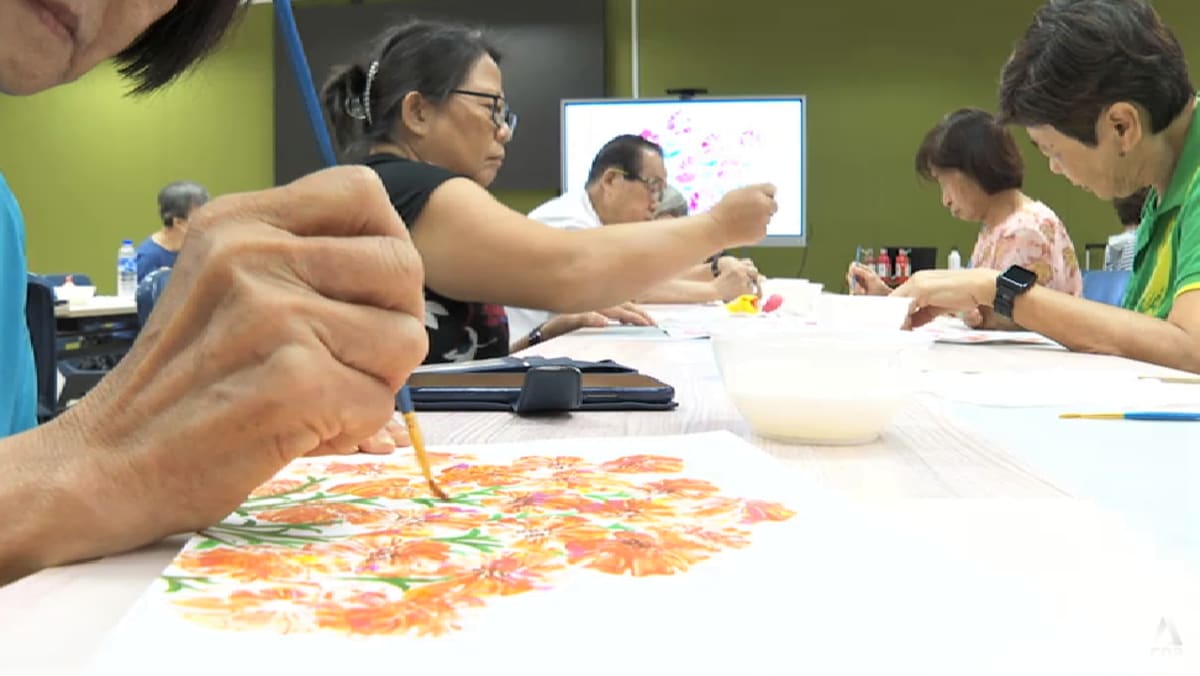
SINGAPORE: On the outset, the elderly who make up most of the Moulmein-Cairnhill estate appear to have many friends, stopping to catch up with long-time neighbours and waving at children.
But their actions may belie their struggles.
In the division within Tanjong Pagar GRC and stretches from Farrer Road to Serangoon Road, these seniors may not feel connected.
“Seniors are very lonely sometimes,” Ms Jessica Lum, who is Moulmein-Cairnhill’s Residents’ Committee Chairwoman, told CNA.
“So when they get together, we need them to meet face to face. They tend to share a lot and then they’ll be happier.”
It is with this aim that “well-being circles” have been set up in the area, as part of a pilot initiative aimed at bringing people together to make sure activities and emotional help are readily available.
As part of the initiative, by social enterprise Happiness Initiative in partnership with the Ministry of Culture, Community and Youth’s SG Mental Well-Being Network, is a programme called Our House Downstairs.
It is a series of arts and crafts sessions run by community partner 32cm that helps about 50 Moulmein-Cairnhill residents interact and bond over vials of neon paint at Pek Kio Community Club every Thursday.
The hope is that the initiative grows and trains more people to act as first responders for mental health in community settings like neighbourhoods and schools.
“We are thinking of getting more partners in to have more initiatives and more activities for (the residents),” said Ms Lum. “We need more training for volunteers to get them together.”
REACHING OUT TO THE YOUTH
However, it’s not just the elderly who needs such support. One group has made the Somerset district its base to reach out to younger Singaporeans.
Youth Corps’ Re:ground @ Dungeon at The Red Box along Somerset Road opens its doors every Thursday, offering a cozy environment, wholesome board games, and a listening ear from peer supporters like Ms Anita Chan.
“When youths feel like they want to talk to someone about their issues, we will just sit in, we’ll talk to them and just provide a listening ear and if necessary, we will direct links to relevant resources such as professional help if needed,” she said.
Sometimes, that means asking about their day. But when a little push is needed, the 27-year-old turns to question-based games like Smol Tok to get the conversation flowing.
Having struggled with change, uncertainty, and stress shortly after entering the workforce, Ms Chan was convinced of the importance of youth mental health.
She joined the Youth Corps Community Peer Supporter Programme in September 2021 to help others like her.
TARGETED PROGRAMMES PROVIDE SUPPORT
According to psychologists, such targeted programmes go a long way in providing more effective support for those struggling with mental health.
“Some coping mechanisms can actually help and I do find that these wellness circles or these mental health outreaches or these so-called first responders can be useful in managing this distress,” said Dr Kelvin Ng, a senior consultant at the Institute of Mental Health (IMH).
“It being locale-based, it’s not so stigmatising. Imagine having to come to IMH, for example, for something that is not really a big, bad mental health issue. That can be quite difficult for some people,” he added.
While Dr Ng agrees that community support could ease the strain on professional services, he is concerned that information overload or misinformation could cause some to believe they might be ill.
“When you have increased awareness, decreased stigma, reduce the obstacles to seeking help, we do see that there are some who would come in – what I term the ‘worried well’ – who are actually not having a disorder,” he said.
“They might be not even in distress, but it could be stress and they could be (thinking): ‘Oh, I watched this on TV, I read this on the Internet. Do I have this, do I have that?’”
Dr Ng said that the key is knowing the difference between distress and disorder, and with the right training, community volunteers can help make a difference in Singapore’s mental health response.
“Once the distress hits the disorder level, meaning that they have developed a mental health issue, then that would be where mental health professionals like myself would have to (step in),” he said.
